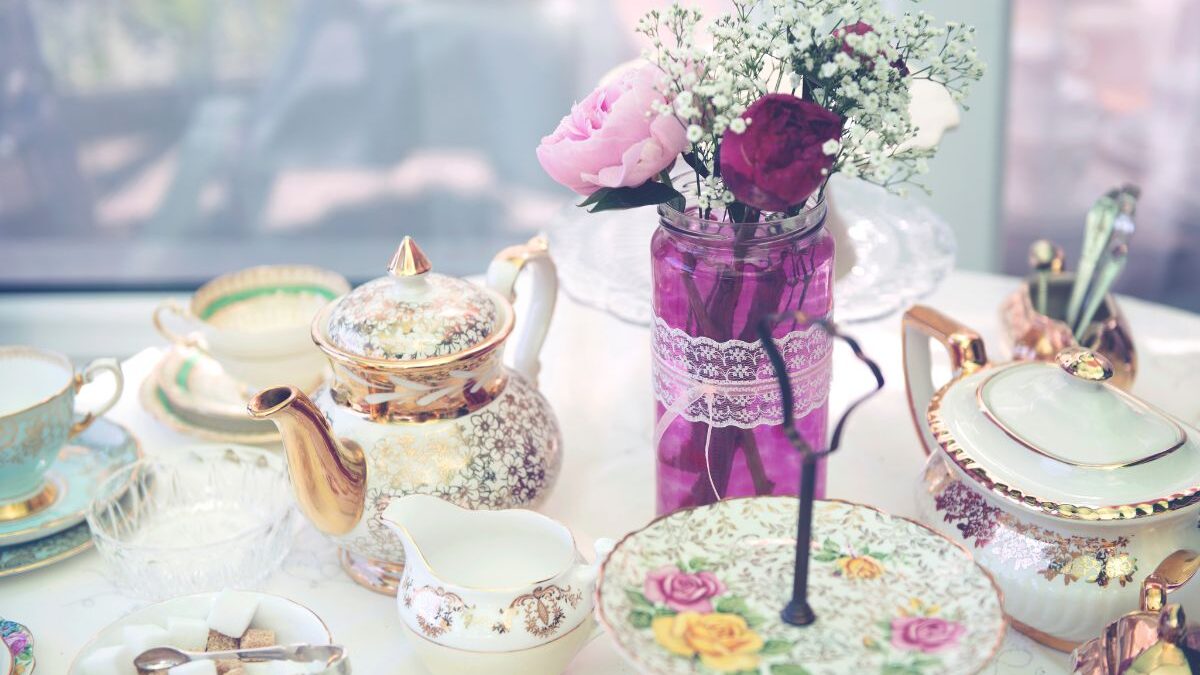Nothing is quite as dainty as serving an afternoon tea. Invite your besties over; set your dining room table with a festive spring setting; use your fancy china on a floral-print tablecloth; and, host a tea that everyone will enjoy. Arrange fresh flowers for a centerpiece, and for that extra touch use the same type of flowers around the house, around your serving stations, and in your place settings. Wow your friends by giving them a quick lesson on the history behind such an event.
History of the “Afternoon Tea”
Afternoon tea was invented by Anna, the seventh Duchess of Bedford (1783-1857), one of Queen Victoria’s ladies-in-waiting. In her day, the upper crust ate a huge breakfast, little lunch, and a very late dinner. Every afternoon, the duchess experienced a “sinking feeling.” One afternoon she instructed her servants to serve tea and little cakes in her boudoir. The experience was so delightful that Anna repeated it every afternoon thereafter. Soon others followed the Duchess’ lead, and in just a few decades the custom of “taking tea” in the afternoon had become well established. At first, the practice was limited to the upper classes, but it eventually became so popular that tea shops and tea-rooms began opening for the enjoyment of the general public.
Starting in the 1800’s in both America and England ladies and their gentlemen friends would gather in the afternoon for tea and conversation. There are many different types of teas. Each is distinguished by what is served along with the tea and the time that the tea is served. The following are some examples of different types of teas:
- Afternoon Tea is served at approximately four o’clock and can consist of whatever the hostess chooses (sandwiches, scones, cookies, or a special dessert). It can be formally served in the dining room or at the living room tea table. Informal teas can be enjoyed in the kitchen, garden, as a picnic, or any location of choice.
- Full Tea is a complete four-course Afternoon Tea with sandwiches, scones, sweets, and a dessert finale.
- Royal Tea adds a glass of champagne or sherry to the Full Tea.
- Light Tea is a lighter version of Afternoon Tea with a scone and a sweet.
- High Tea is most often served as a Full Tea, only more of the same. It is enjoyed at approximately six o’clock and is a light supper for the family or a before-theater meal. An entree such as chicken a la king or meat pie may be served with breads, biscuits, salad, cheese, fruit, and sweets. Everyone sits down at the table.
While these are the more traditional teas, it gives us ideas of how to bring these old traditions into our modern time.
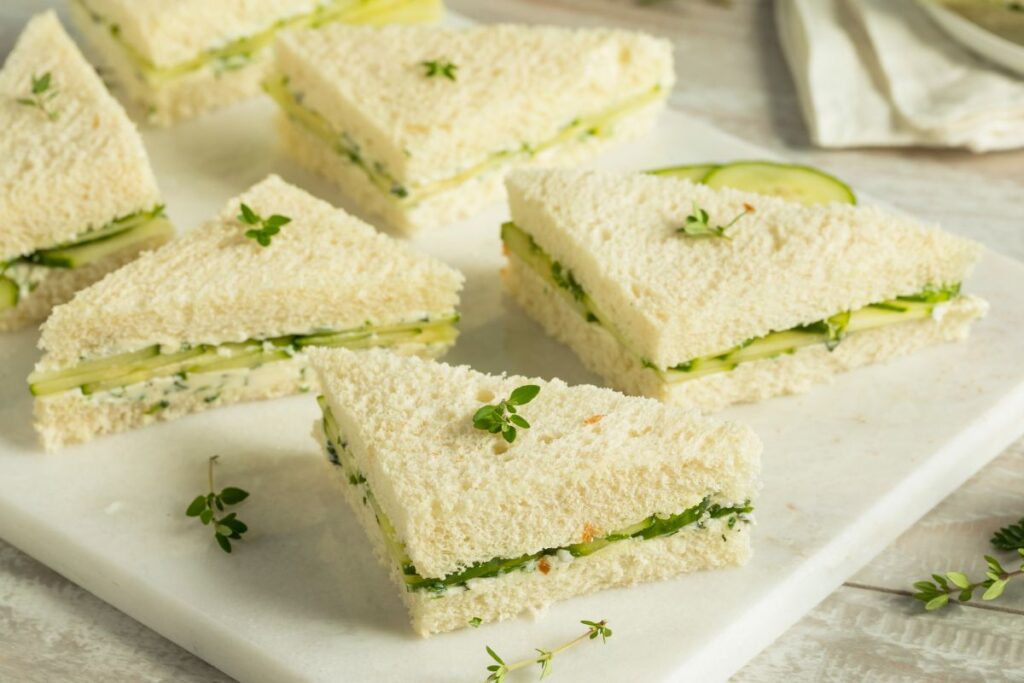
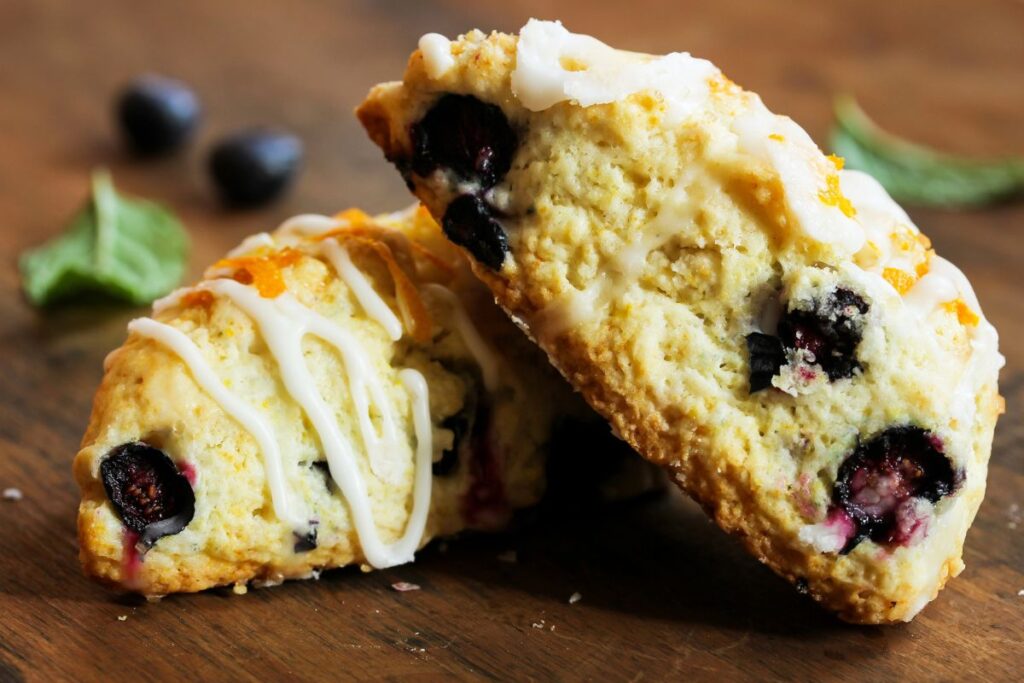
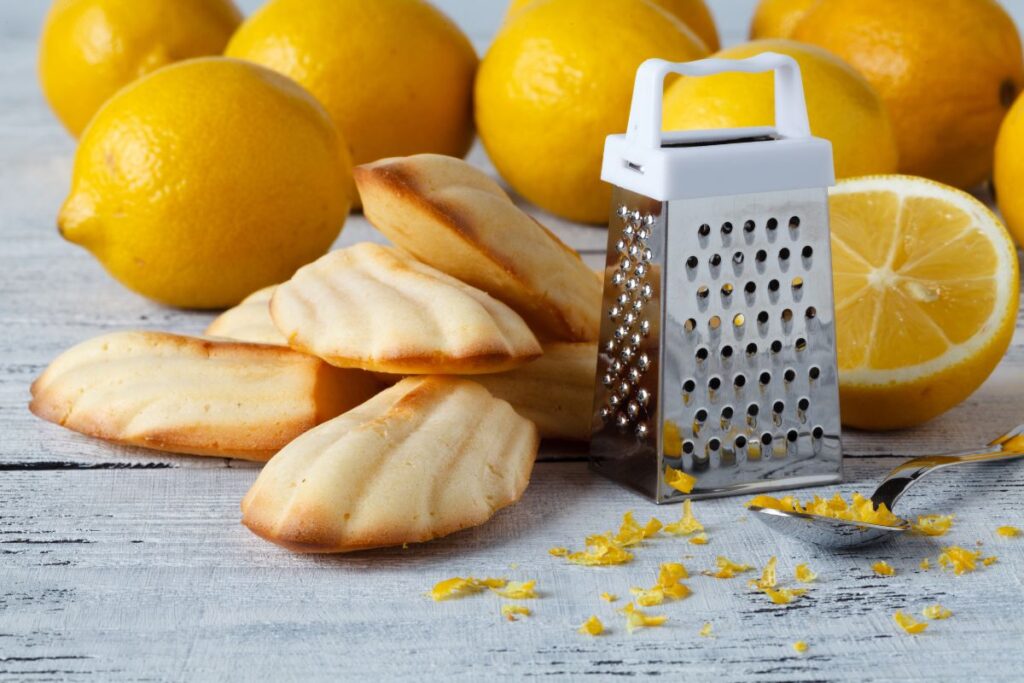

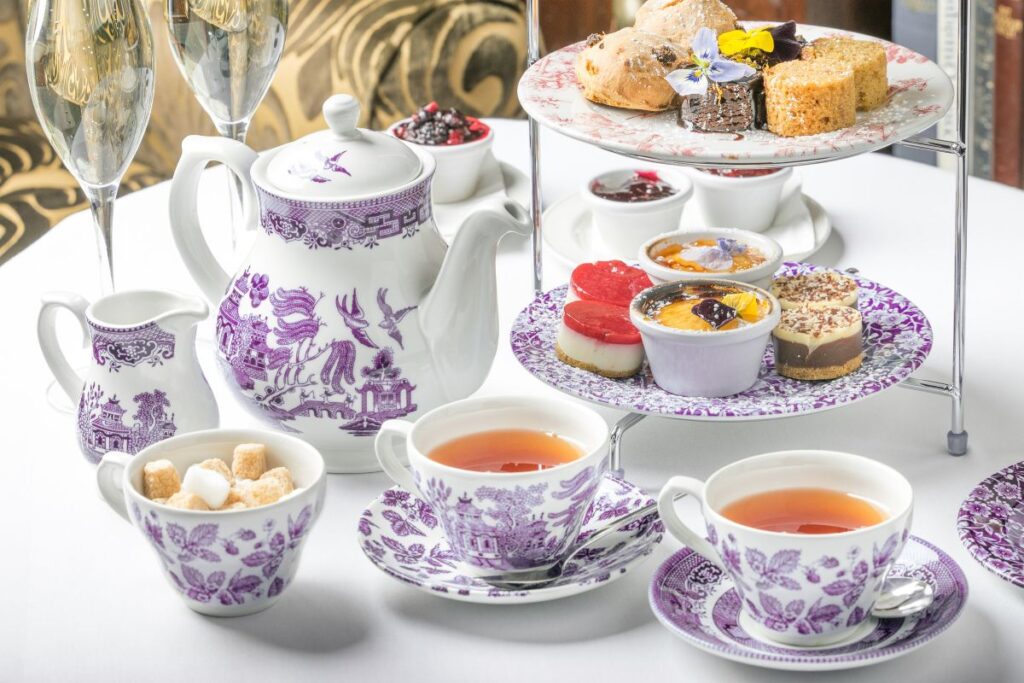
Menu:
- Tea (of course!) – Choose a nice flavorful tea, you can never go wrong with Earl Grey or English Tea Time, but if you would like to find something a little different check out your local tea store, and they can recommend something. Also be sure to have plenty of accompaniments on hand such as sugar cubes, honey, lemons, and cream or clotting cream (used in England).
- Cucumber Sandwiches
- Tomatoes with Honey-Basil Vinaigrette
- Blueberry Scones
- Madeleine Cookies
Hostess Tips:
- Prepare a Proper Tea Setting: Set a charming and inviting table with elegant teacups, saucers, and teapots. Use fine china or delicate porcelain for an authentic touch. Arrange tiered stands with an assortment of finger sandwiches, scones, and sweet treats. Don’t forget to include small plates, dessert forks, and teaspoons for your guests.
- Select a Variety of Teas: Offer a selection of high-quality loose-leaf teas to cater to different tastes. Include classic black teas like Earl Grey and English Breakfast, as well as green teas and herbal infusions. Provide hot water and a tea infuser for guests to steep their preferred tea to perfection.
- Prepare an Array of Delectable Treats: Prepare a variety of finger sandwiches with classic fillings such as cucumber and cream cheese, smoked salmon, and egg salad. Offer freshly baked scones with clotted cream and jam, as well as an assortment of dainty pastries, cakes, and cookies.
- Timing is Key: Serve the food in stages, starting with the sandwiches, followed by the scones, and then the sweet treats. This allows your guests to savor each course without feeling rushed. Offer refills of tea as needed and keep an eye on empty plates to ensure everyone is well-fed and satisfied.
- Create a Relaxed Atmosphere: Play soft background music, such as classical or instrumental tunes, to set a relaxed and refined ambiance. Encourage your guests to engage in conversation and enjoy the tea and treats at their leisure.
- Dress the Part: Encourage your guests to embrace the tradition by suggesting they wear semi-formal attire or hats, adding a touch of elegance and fun to the occasion.
By following these tips, you’ll host a delightful Afternoon Tea event that transports your guests to a world of grace and sophistication while creating cherished memories that last a lifetime.

